Tom's Hardware Verdict
Sporting a PCIe 4.0 x4 interface and the latest quad-plane QLC flash from Micron, the Rocket Q4 has the goods to deliver performance, and it comes with competitive pricing.
Pros
- +
Aesthetic appeal
- +
High performance and efficiency
- +
Up to 5-years warranty
Cons
- -
1-year warranty without registration
- -
Slow write speed after write cache fills
- -
Low endurance-per-GB compared to TLC
Why you can trust Tom's Hardware
Looking for PCIe Gen4 SSD performance paired with high-capacity, but don’t want to break the bank? With sleek looks and competitive pricing, Sabrent’s Rocket Q4 may be just what gamers on a budget are looking for. This M.2 NVMe SSD dishes out speeds of up to 4.9GBps and keeps cool doing it, but it isn’t the fastest nor the most endurant SSD on the market. That’s where its price-to-performance ratio becomes essential.
Sabrent’s Rocket Q was one of the first QLC SSDs to hit the market with a high-end Gen3 NVMe controller, and the company’s new Rocket Q4 is one of the first QLC-based SSDs powered by a Gen4 controller. With Phison’s PS5016-E16 managing up to 4TB of Micron’s 96-Layer QLC flash, Sabrent’s Rocket Q4 offers potential buyers speed, capacity, and affordability, filling the gap between the Rocket Q and Rocket NVMe 4.0 we’ve previously reviewed.
Specifications
| Product | Rocket Q4 1TB | Rocket Q4 2TB | Rocket Q4 4TB |
|---|---|---|---|
| Pricing | $159.99 | $319.99 | $749.99 |
| Row 1 - Cell 0 | +$20 for the heatsink | +$20 for the heatsink | +$20 for the heatsink |
| Capacity (User / Raw) | 1000GB / 1024GB | 2000GB / 2048GB | 4000GB / 4096GB |
| Form Factor | M.2 2280 | M.2 2280 | M.2 2280 |
| Interface / Protocol | PCIe 4.0 x4 / NVMe 1.3 | PCIe 4.0 x4 / NVMe 1.3 | PCIe 4.0 x4 / NVMe 1.3 |
| Controller | Phison E16 | Phison E16 | Phison E16 |
| DRAM | DDR4 | DDR4 | DDR4 |
| Memory | Micron 96L QLC | Micron 96L QLC | Micron 96L QLC |
| Sequential Read | 4,700 MBps | 4,800 MBps | 4,900 MBps |
| Sequential Write | 1,850 MBps | 3,600 MBps | 3,500 MBps |
| Random Read | 180,000 IOPS | 350,000 IOPS | 350,000 IOPS |
| Random Write | 450,000 IOPS | 700,000 IOPS | 700,000 IOPS |
| Security | N/A | N/A | N/A |
| Endurance (TBW) | 200 TB | 400 TB | 800 TB |
| Part Number | SB-RKTQ4-1TB | SB-RKTQ4-2TB | SB-RKTQ4-4TB |
| Warranty | 5-Years w/ Registration; 1-Year w/out | 5-Years w/ Registration; 1-Year w/out | 5-Years w/ Registration; 1-Year w/out |
Sabrent’s Rocket Q4 comes in capacities of 1TB, 2TB, and 4TB. Pricing lands at roughly $0.16 - $0.19 per GB, and you can purchase a model with a somewhat oversized heatsink for roughly $20 more. Sabrent rates the Rocket Q4 to deliver up to 4.9/3.6 GBps of sequential throughput and upwards of 350,000/750,000 random read/write IOPS, too (depending on capacity).
However, these numbers represent sustained performance. The Rocket Q4 features a fully dynamic write cache that recovers fairly quickly. The cache spans one-quarter of the available capacity, meaning our 4TB sample can absorb up to 1TB of write data before performance slows.
Even though it sports Phison’s fourth-gen LDPC error correction control, Sabrent rates the Rocket Q4 for lower-than-average endurance of up to 800TB on the largest 4TB model (200TB per 1TB of capacity). The endurance rating applies throughout the SSDs’ warranty period, which is just one year by default if you do not sign up for the five-year coverage by registering the SSD within 90 days.
Sabrent’s Rocket Q4 supports secure erase functionality as well as Trim and S.M.A.R.T. data reporting. But, unlike some competing drives, it does not support AES 256-bit hardware encryption. It does support end-to-end data path protection and power management technologies, though.
Software and Accessories
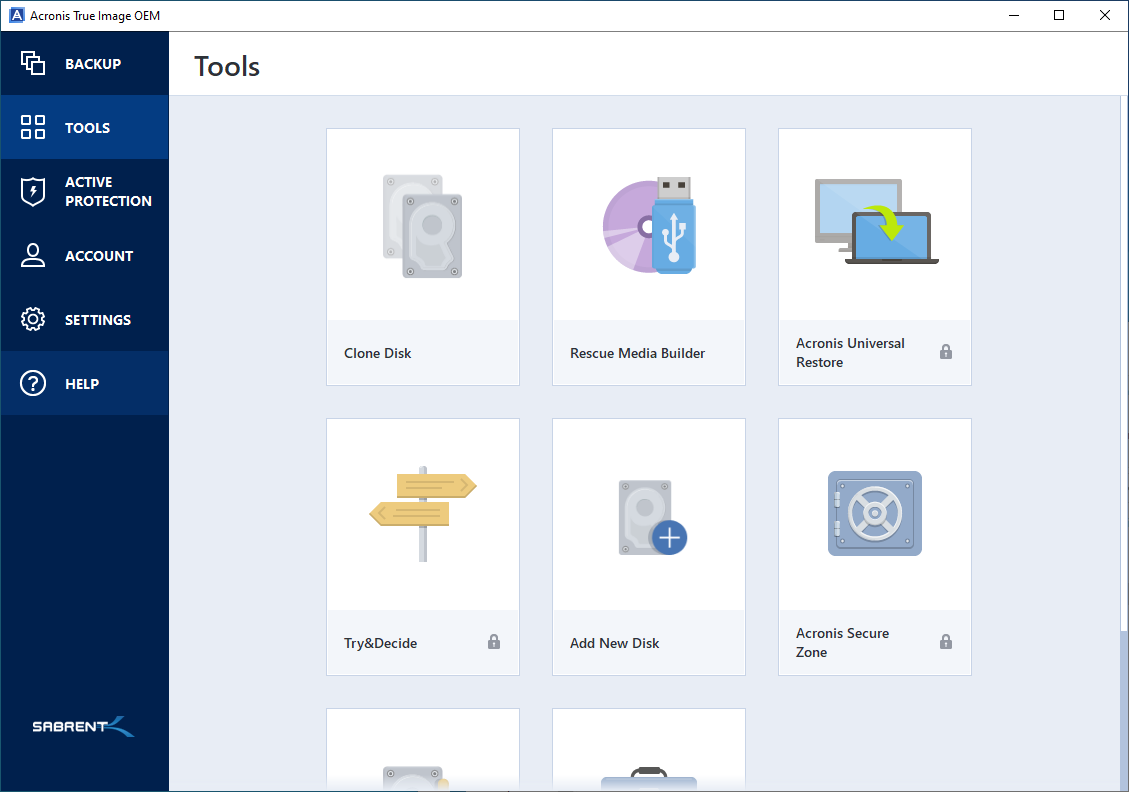
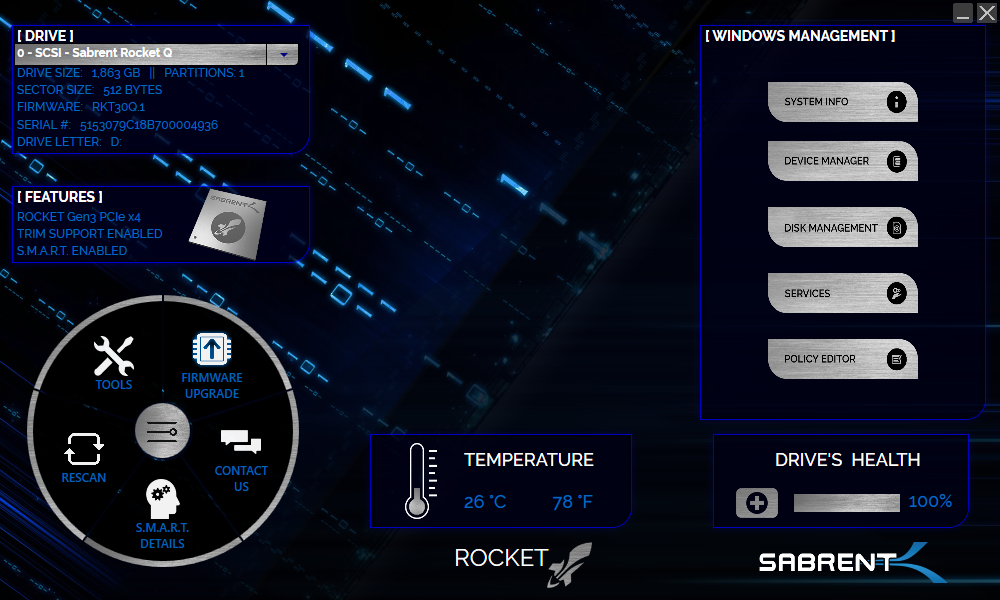
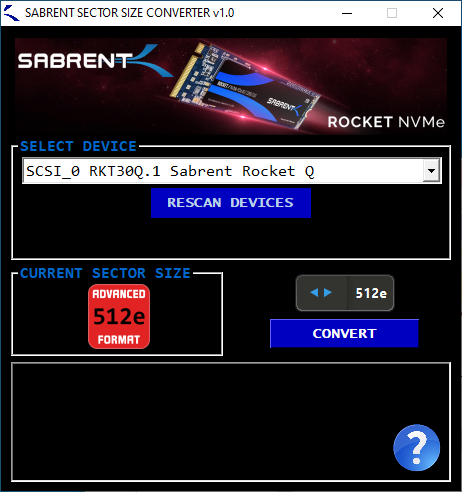
Sabrent offers a free-to-use copy of Acronis True Image OEM for drive cloning and backups. The company also includes an SSD toolbox called the ‘Control Panel App’ to monitor and update its firmware. It also has a sector-size formatting tool for those who need to change between 4Kn and 512e formats.
Get Tom's Hardware's best news and in-depth reviews, straight to your inbox.
A Closer Look
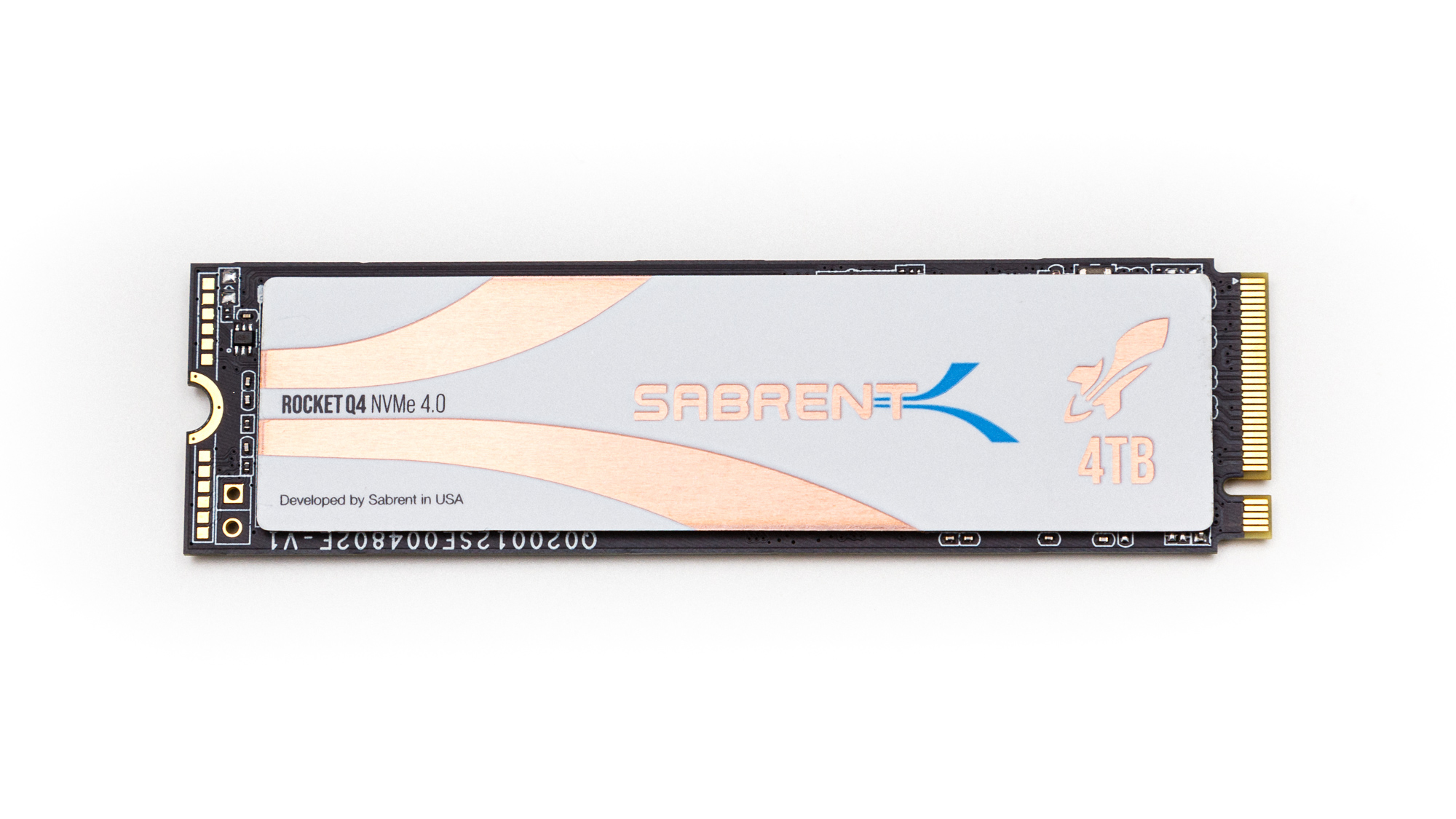
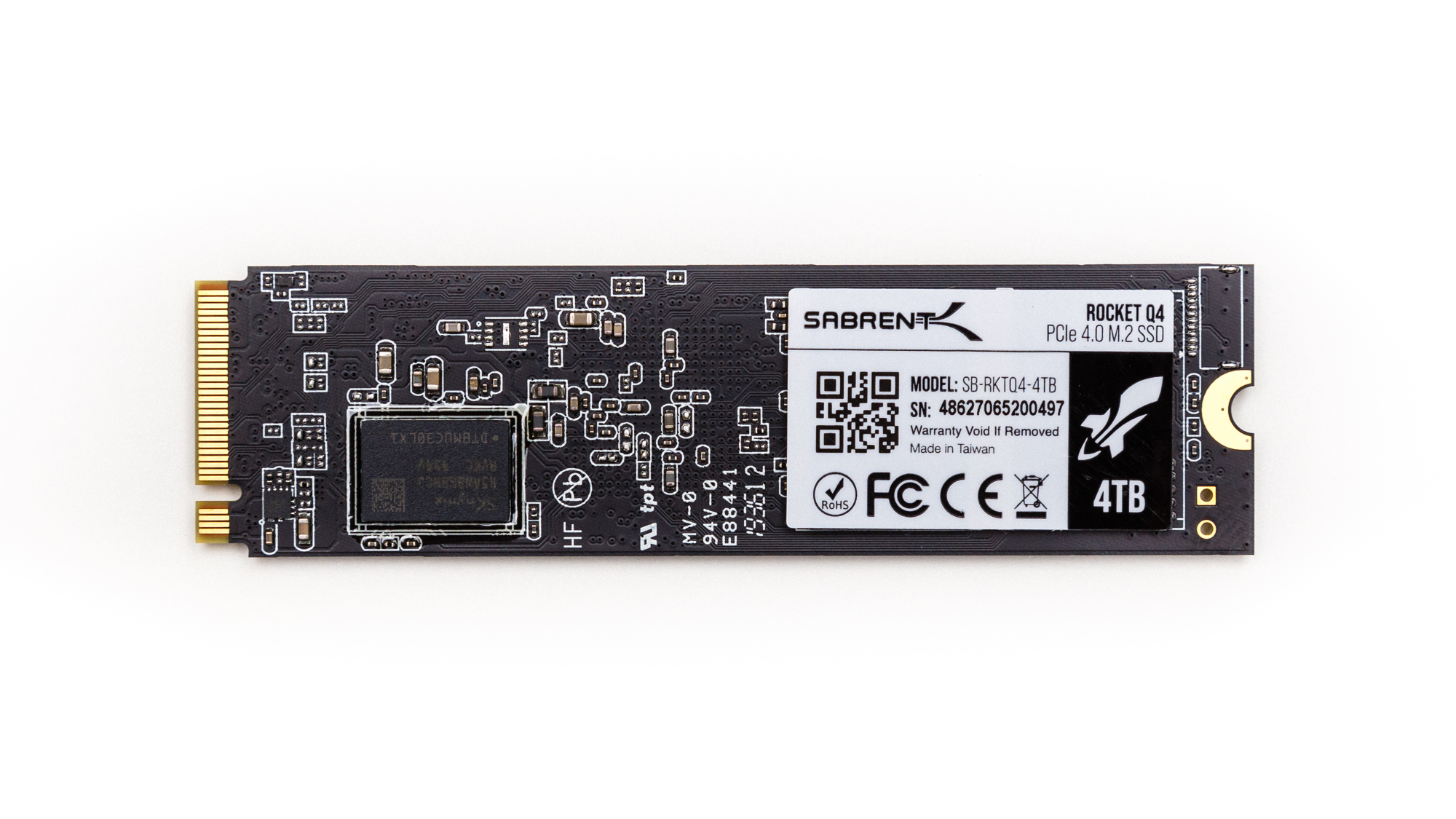

When it comes to first impressions, we’re quite impressed by the Rocket Q4’s sleek looks. Minor touches like the black PCB, well-designed white sticker, and the copper heat spreader that spans the SSD’s surface gives the drive just the tweaks needed to improve on the Rocket Q’s already good looks. The 4TB SSD comes in an M.2 2280 double-sided form factor with two NAND packages, the controller, and a DRAM chip on the top of the PCB, and another two NAND packages and a DRAM chip reside on the bottom.
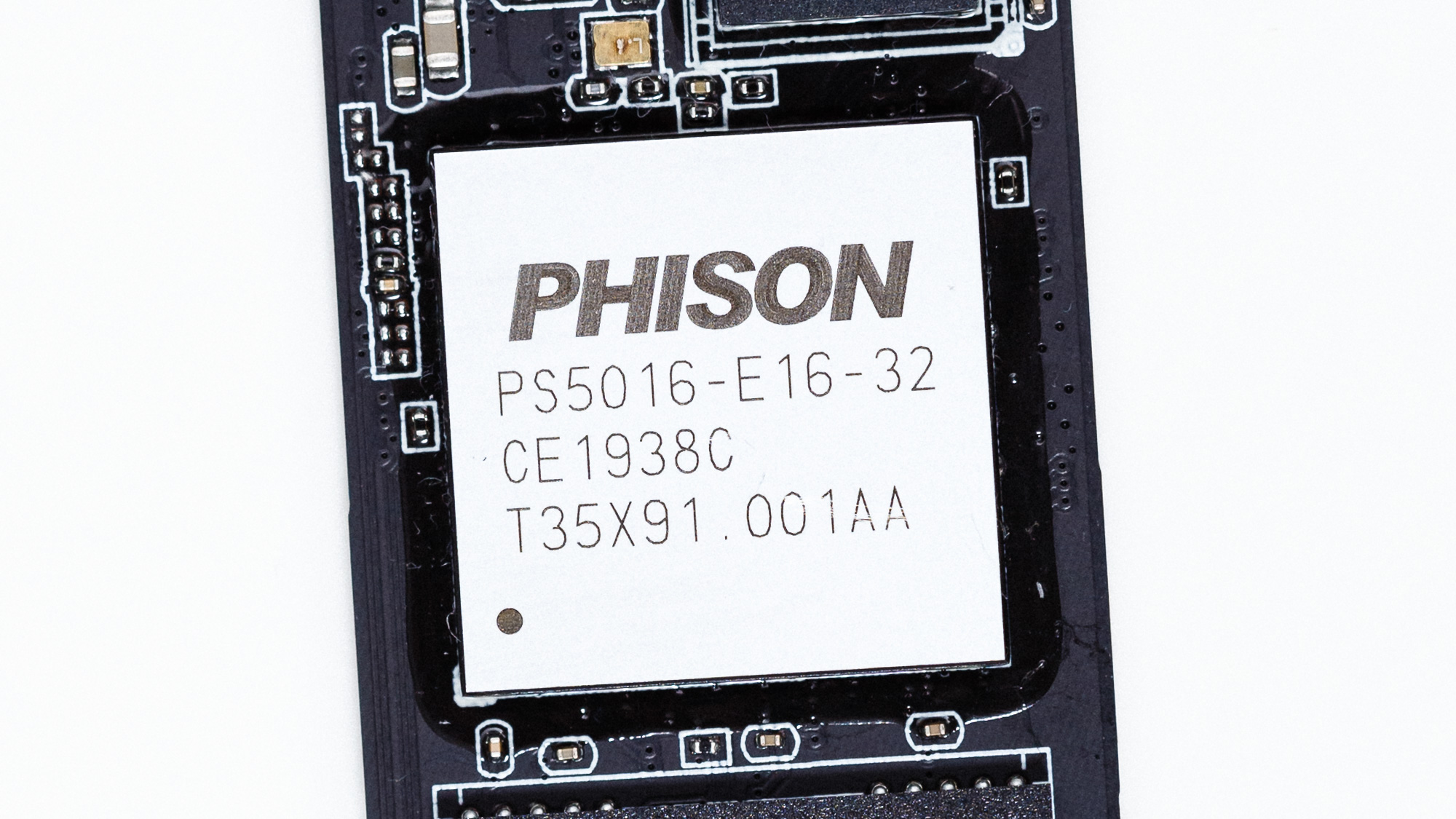
Phison’s E16 was the first PCIe 4.0 x4 NVMe SSD controller to hit the market. It improves upon the company’s E12 NVMe SSD controller with a few modifications. It is built on a 28nm process node and features two Cortex R5 CPUs with dual co-processors (CoXProcessor 2.0 technology). However, rather than operating at a 666MHz clock-rate, the E16 runs a little faster at 733MHz. The co-processors operate at lower speeds and help offload some of the firmware routines from the R5s for both improved performance and efficiency.
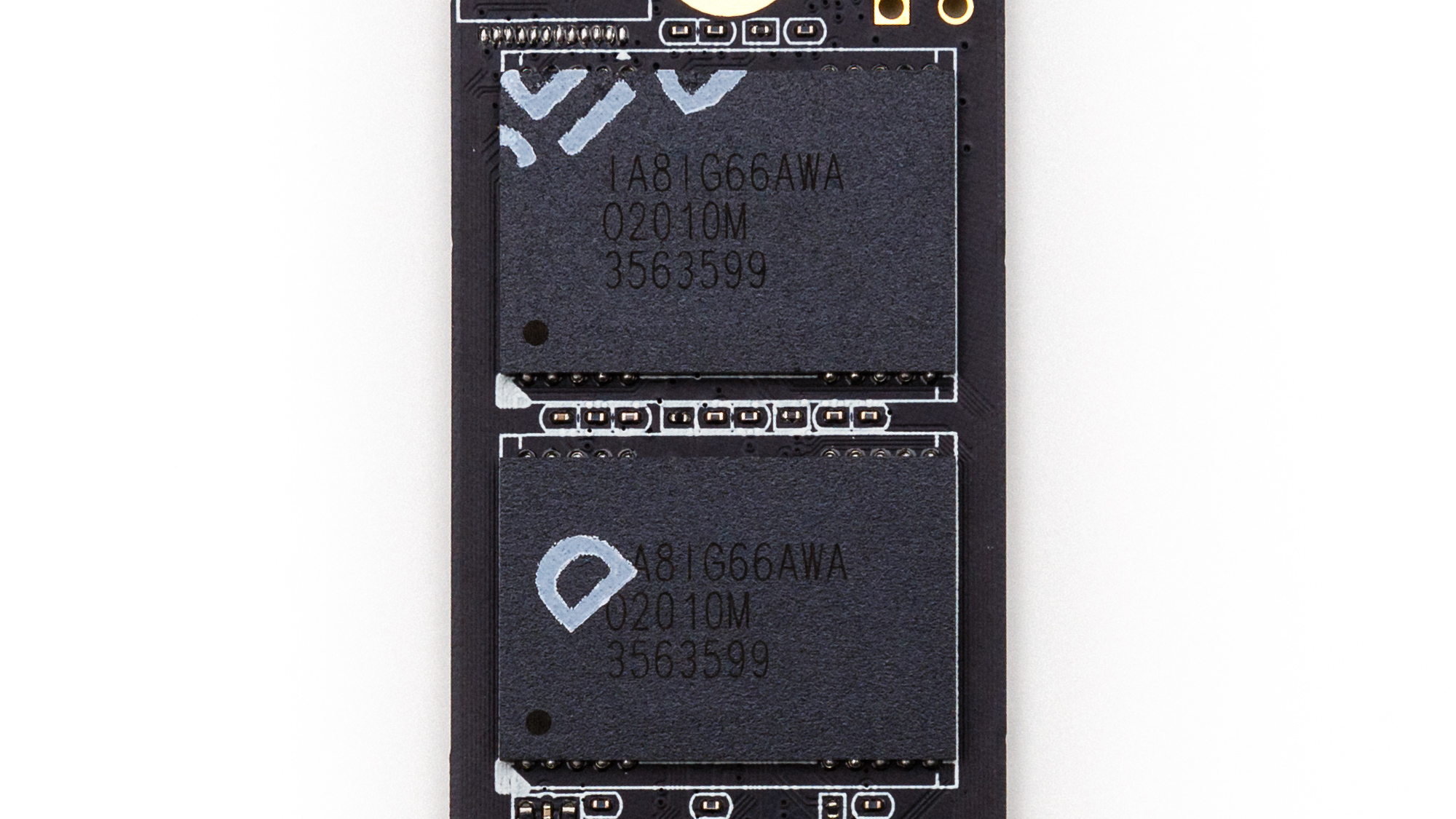

The E16 leverages a DRAM cache for mapping FTL data. The 4TB Rocket Q4 has two 8Gb SK hynix DDR4 DRAM ICs that operate at 1,600 MHz, and both consume 1.2v. Additionally, the SSD features eight NAND channels, twice that of low-end controllers, for fast performance and a slight reduction in overall efficiency. The controller interfaces with the 1Tb Micron QLC flash dies at up to 800 MTps over those channels. This flash features a quad-plane design that enables more interleaving than two-plane designs. Along with other advanced engineering techniques, Sabrent says this helps achieve very low latency.

Sean is a Contributing Editor at Tom’s Hardware US, covering storage hardware.
-
atomicWAR Picked up one of the 2TB varients. It's a great game drive...super fast game loads. I use my HDD Pool for bulk game storage then transfer games to the Sabrent Rocket Q4 for actual gameplay. Seriously can't complain so far. I do worry about endurance being QLC but for now things are awesome!Reply